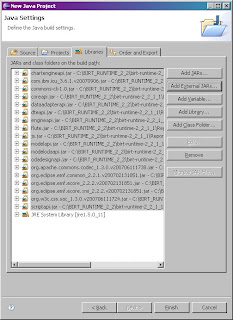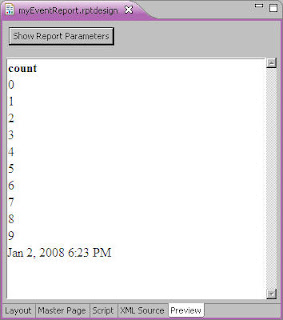
Recently I was working on a Java based program that hooked into an indexing process to make modifications to the data it was indexing. In this case, it was stripping out HTML formatting and removing unnecessary whitespace. Because this was a Java app, performance was dismal. Under normal circumstances I would have gone with a platform that would provide better native support for my platform, such as C, C++, or even a scripting language like Perl would have sufficed. However that was outside of the requirements for this project.
So to improve performance, I needed a profiler to track down my performance bottlenecks. I tried the Eclipse Performance and Logging tools, only to be really disappointed with the results. And by disappointed, I mean that I received errors when running the Eclipse profiler so I couldn’t get any kind of results. So, my search for an alternative lead me to JRat.
JRat is fairly easy to use. To Launch an application for profiling, you simply append an argument to the Java VM. From Eclipse, this can be done from the Run Dialog, under the Arguments tab.
To demonstrate this, I am using the Prime Number example (not sure why I called it Factorize). The code I am using contains both the unoptimized prime number list and the optimized one. The code is below:
package com.digiassn.blogspot;
import java.util.ArrayList;
import java.util.List;
import java.util.Iterator;
public class Factorize {
private static int MAX_NUMBER = 10000;
public boolean isPrime(int number)
{
if (number == 1)
return false;
for (int x = 2; x < number; x++)
{
if ((number % x) == 0)
{
return false;
}
}
return true;
}
public List getFactors()
{
List factors = new ArrayList();
for (int x = 2; x < MAX_NUMBER; x++)
{
if (isPrime(x))
{
factors.add(x);
}
}
return factors;
}
public List getFactors2()
{
boolean [] list = new boolean[MAX_NUMBER];
List l = new ArrayList();
for (int x = 0; x < MAX_NUMBER; x++)
{
list[x] = true;
}
list[0] = false;
list[1] = false;
for (int x = 2; x < MAX_NUMBER; x++)
{
if (list[x])
{
for (int y = (x * 2); y < MAX_NUMBER; y += x)
{
list[y] = false;
}
l.add(x);
}
}
return l;
}
/**
* @param args
*/
public static void main(String[] args) {
Factorize f = new Factorize();
List l = f.getFactors();
List l2 = f.getFactors2();
for (int x = 0; x < l.size(); x++)
{
if (!((Integer)l.get(x)).equals((Integer)l2.get(x)))
{
System.out.println("Something didn't match" + l.get(x) + " " + l2.get(x));
}
}
System.out.println(l.size());
System.out.println(l2.size());
}
}
In the below screenshot, I have jRat installed under C:\Jrat.
Figure 1. Adding JRat to your Eclipse Run
That’s basically it, when you run the program, you will see a whole bunch of output from the console.
Figure 2. Console output
When run with Jrat, it will save its statistics to a file under the project folder that you will need to open in JRat in order to view your statistics. To run JRat to view statistics, you would run the following command:
java -jar shiftone-jrat.jar
Figure 3. The JRat Window.
Above is a screenshot of the file generated by JRat opened and sorted by percentage of time spent in a method. I can see that unoptimized getFactors method is where the program spent a majority of its time, were the optimized getFactors2 barely spent any time at all.
To be fair, this doesn’t offer nearly as much analysis as the Eclipse Profiler. The Eclipse Profiler has the option to test memory allocation sizes as well as execution time, and it provides some very nifty outputs, such as the ability to export class interations into UML diagrams, as shown in the below screenshot.
Figure 4. The Eclipse Profile Perspective.
While I like JRat, I did find a few things I didn’t like. The biggest one is that is isn’t a Eclipse plug-in. While this is actually a pro as well as a con, I have to admit a certain amount of lazyness on my part, and having to jump outside of Eclipse to view my results can be a little annoying. I suppose a plug-in could be built to view these results, however. Next, is the release schedule is a little inconsitent. As of this writing, the last stable release was on 2007-09-11, and before that, it was 2006-07-31. Yikes. I hope the project is still viable.
So if you get into a situation where the Eclipse profiler refuses to work with your application, you might want to give jRat a try.

















